SketchUp is not a NURBS modeler because...
-
So humor me a bit. I'm not a software engineer, and I haven't logged any time on programs like Rhino, Solidworks, etc..
I was reading the entry for NURBS on wikipedia, and I came across this image:

This looks, to me, similar to a 3d object in sketchup. After a quick read of the supporting text, here's what I think I understand:
SketchUp creates control points and faces to create 3d shapes, but each point and face is explicitly defined by user (or plugin) input. A NURBS modeler uses a more sophisticated set of algorithms to display the same 3d shape? The same control points and faces are defined in the NURBS modeler, but more in the "back end" of the software?
Does this even come close to an accurate description?
-

Sorry, we can't find that page.
Rhinoceros 3D: The page you requested doesn't seem to exist.
www.rhino3d.com (www.rhino3d.com)
-
i think that image might be confusing unless you look at it very closely.. notice the blue surface isn't actually being created by those lines as it would be in sketchup.. the control points are influencing the surface but not defining it's boundaries.. those control points aren't the same thing as a vertex in sketchup
-
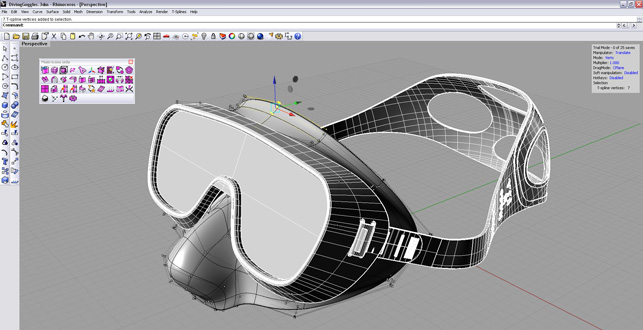
T-Splines for Rhino
Moving surfaces around like he's shaping the Universe, Josh Mings gets to grips with a surface modeling add-on for Rhino which offers designers and engineers unrivalled control over their freeform creations

DEVELOP3D (develop3d.com)
This article has a good part about NURBS vs. polygons.
-
fwiw, nurbs like behavior isn't impossible in sketchup and we've already seen a few ventures into it..
BezierSpline.rb is a good example and curviloft as well. (especially when looking at the various spline methods fredo has used and the edibility of surfaces).. i'm thinking fredo has a bunch of SUnurbs experiments going on at the moment and we'll eventually see even more nurbs style plugins. -
this may or may not help but an example of something that's possible with rhino but isn't with sketchup is this drawing..
here's a surface that would be possible to mimic in sketchup (just a revolved spline) notice how it's mellower towards the bottom and tightening up as it nears the top..
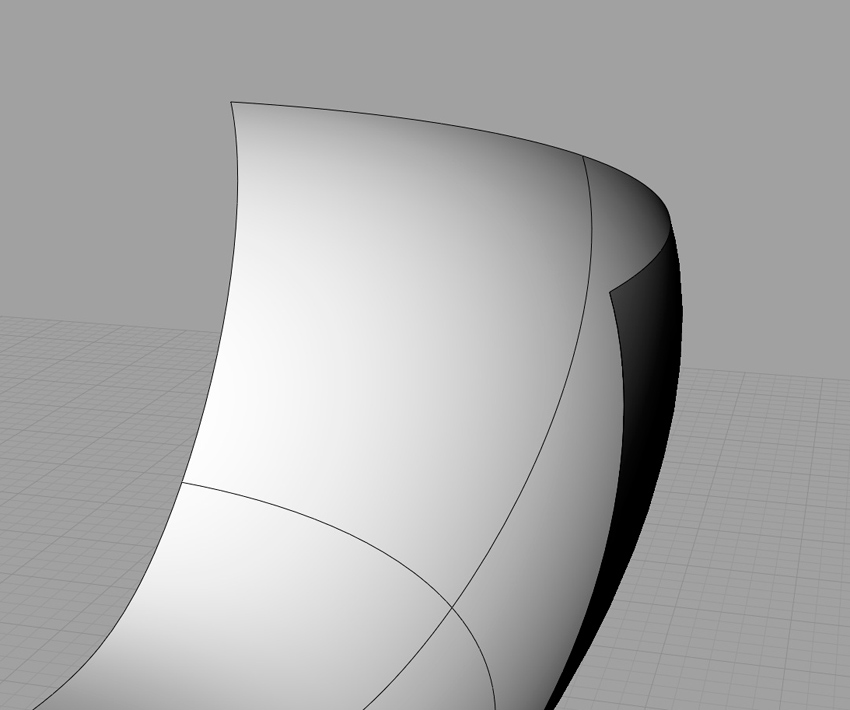
but, in rhino, since that surface is mathematically defined and not just a collection of vertices that aren't aware of one another (my simplistic definition of a polygon surface
 ), i can extend that surface very easily and you'll see that it continues tightening as the existing surface was doing.
), i can extend that surface very easily and you'll see that it continues tightening as the existing surface was doing.
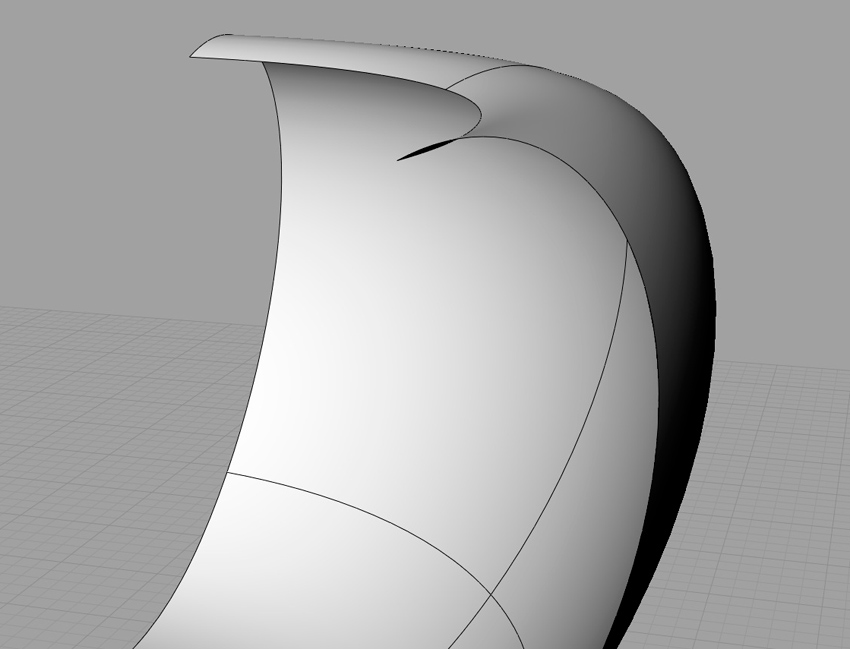
-
and the funny of the thing is at least in final on your screen Su or Rhino are bother "triangles" from the graphic card for be possible to visible render

(in my simplistic definition)
-
Interesting... just last night I was revisiting my BezierPatch plugin I experimented on about a year ago...
-
It seems that every ruby extension created for Sketchup is analogous to features native to other modeling apps. That is simply because the needs are the same in Sketchup.
-
@mitcorb said:
It seems that every ruby extension created for Sketchup is analogous to features native to other modeling apps. That is simply because the needs are the same in Sketchup.
hm...
One do not always need NURBS. Some times you do, some times you don't.
Nor do one always need every feature any other modelling application has.
If it had - then we'd have a big bloating beast.But - SketchUp has a platform where you can make it fit your own specialised needs.
-
@ThomThom:
Yes. You are right about the beast. As we know the SU developers wanted to keep the app compact. -
@unknownuser said:
and the funny of the thing is at least in final on your screen Su or Rhino are bother "triangles" from the graphic card for be possible to visible render

(in my simplistic definition)
yeah, in nurbs modelers we only see a representation of the surface via a render mesh and it's not accurate (well, it's 100% accurate if you take measurements from it or export to cnc production etc..). i think it's impossible to show a true nurbs surface on our current monitor technologies in the same way we can't truly see a circle on our screens.. (a bunch of square pixels can't display a true curve)
here's a closeup view of a rhino surface.. the wires are what you have to pay attention to and trust them but the surfaces will often to appear segmented (well, because they are meshes just like in SU)
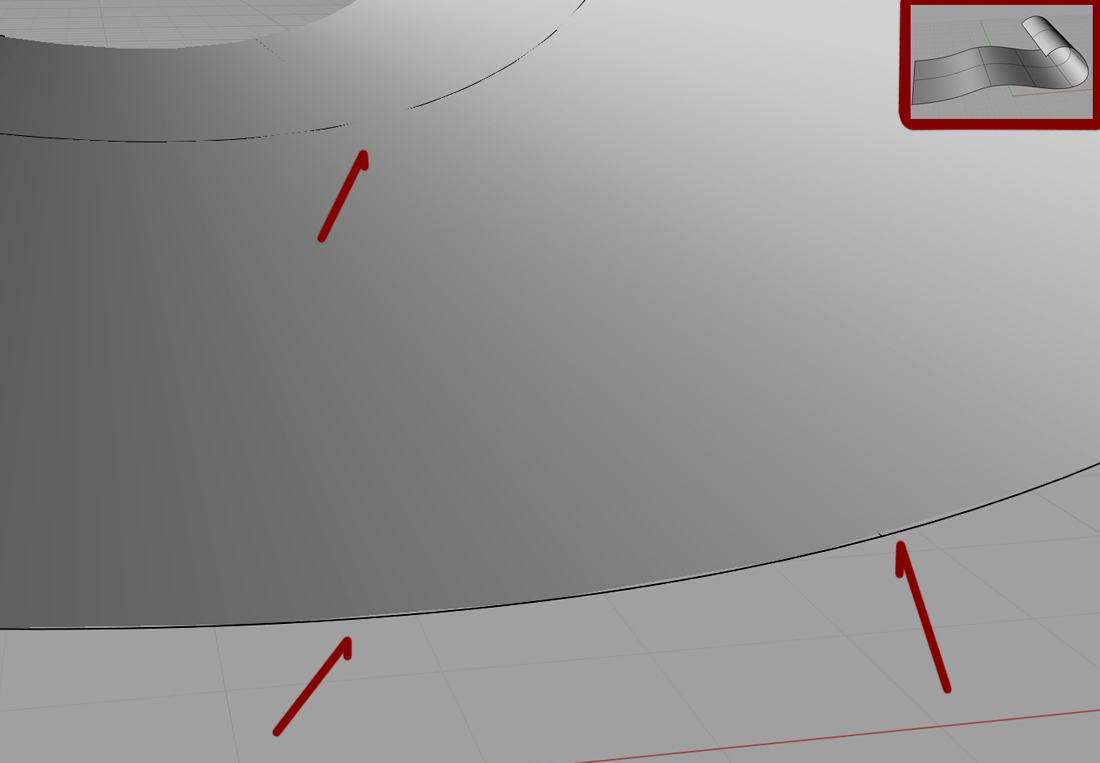
the one thing i don't really like about rhino is their nurbs to mesh technique and i don't think they're nearly as clean as they could be.. i hear moi is much better at this.. hopefully, rhino v5 (which will also be the 1st official iRhino release) will change this.
-
yes in Moi you can regulate for have a "perfect fit" of the curve on the surfaces
But it's only for the screen and that can slowdown all if you have a very big file!
It's just for pleasure of the eyes
But for normal file size that is very cool
-
I've worked a lot with Nurbs in Maya and they are good for some things and polygons are better for some.
What is needed if ever someone makes a nurbs/spline patch ruby is that it keeps the editing capabilities all the time. Meaning it makes it possible to change the "subdivision" to polys even after editing and just crank it up when its time to render. -
@unknownuser said:
yeah, in nurbs modelers we only see a representation of the surface via a render mesh and it's not accurate (well, it's 100% accurate if you take measurements from it or export to cnc production etc..). i think it's impossible to show a true nurbs surface on our current monitor technologies in the same way we can't truly see a circle on our screens.. (a bunch of square pixels can't display a true curve)
mhm.. NURBS modellers will have to refine the mesh to the point where a edge segment is <= 1px
-
@pixero said:
I've worked a lot with Nurbs in Maya and they are good for some things and polygons are better for some.
What is needed if ever someone makes a nurbs/spline patch ruby is that it keeps the editing capabilities all the time. Meaning it makes it possible to change the "subdivision" to polys even after editing and just crank it up when its time to render.Something like this:
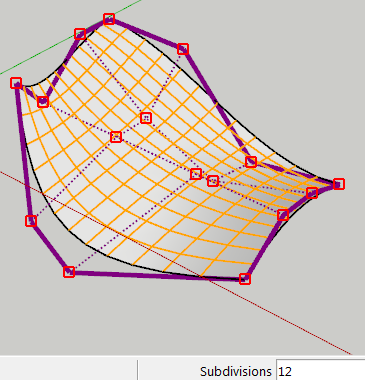

-
Wow... a picture really is worth a thousand words. I can't wait to try that plugin

Best,
Jason. -
In these moments Scripts' conceptors are out burst!


Users can't follow the flux
-
And the plus side of these patches are that they are easy to UV map.

-
UV mapping
 Please go on
Please go on 
Advertisement







